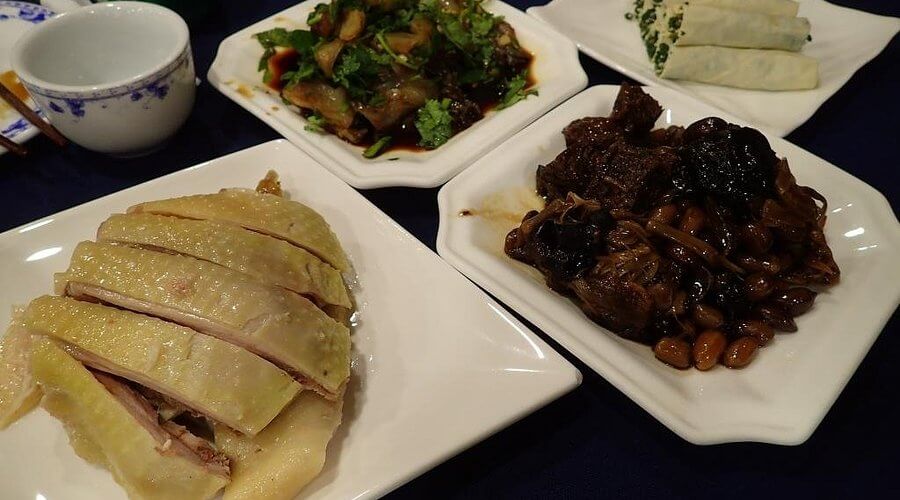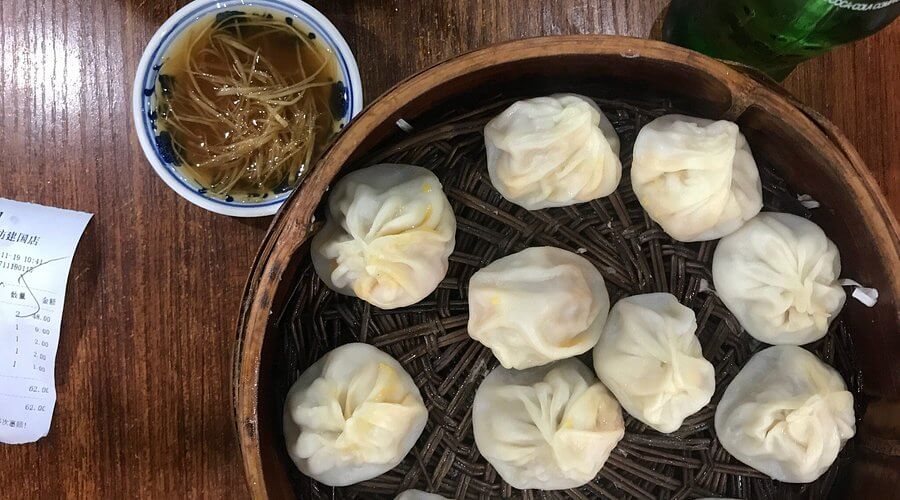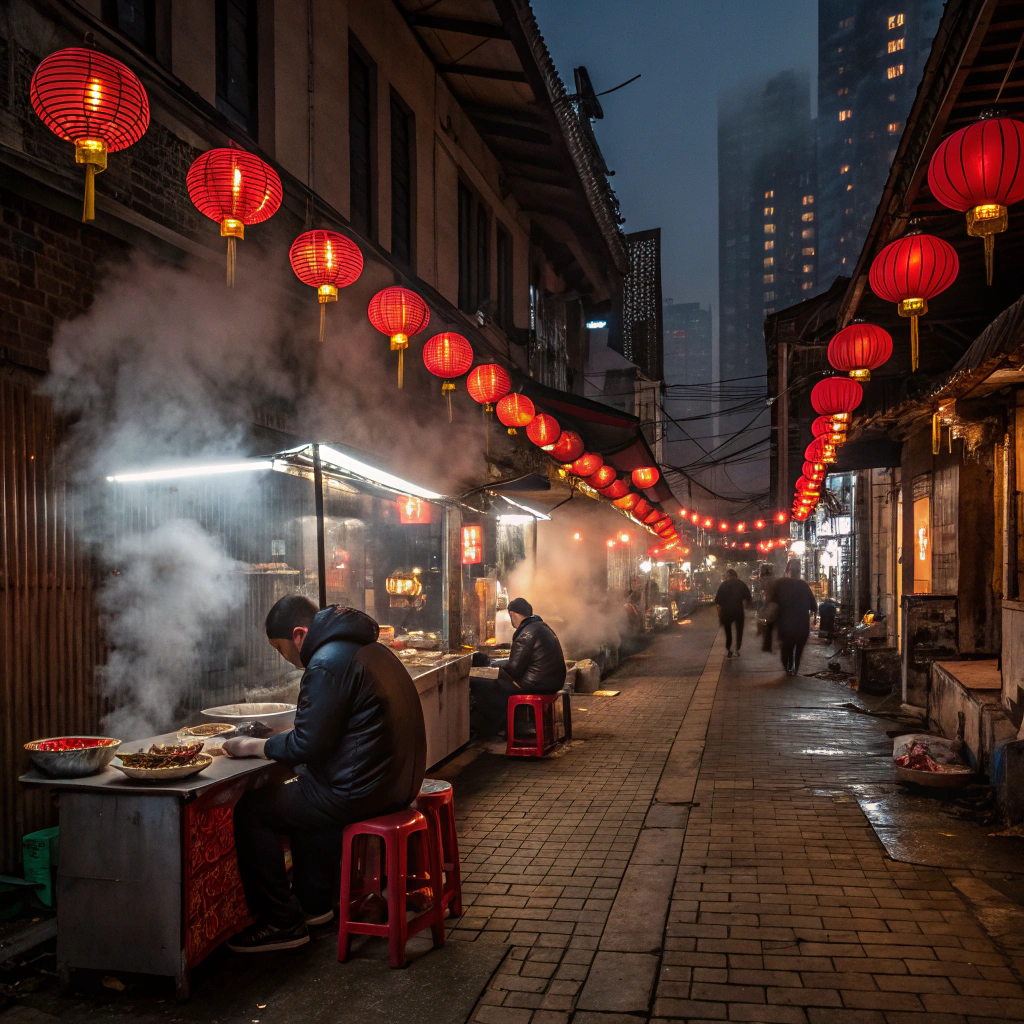The moment I stepped into that tiny, steamy shanghai chinese restaurant down an unassuming alley in the Old City, I knew I’d found something special. The aroma of black vinegar and ginger hit me like a delicious tidal wave, and I instantly forgot about the 14-hour flight that had left me barely functioning just hours earlier.
I’ve visited Shanghai three times now—a week-long adventure in 2017, a month-long stay in 2019 when I was attempting to “find myself” (spoiler: I mostly found dumplings), and most recently a two-week food exploration trip last year. Each time, I’ve fallen deeper in love with this metropolis where ancient culinary traditions coexist with mind-blowing innovation.
Let me be real though—my first visit was a complete disaster food-wise. I made the classic Western mistake of sticking to the fancy places in tourist areas and eating what I thought was authentic Shanghai cuisine. Boy, was I wrong! It wasn’t until a local hostel owner practically dragged me to his favorite hole-in-the-wall spot that my taste buds finally experienced the real deal.
This guide is my love letter to the incredible culinary landscape of Shanghai, from hidden gems tucked away in narrow longtangs to the sleek, modern interpretations of classic dishes. I’m gonna take you through the absolute best spots to experience authentic Shanghainese cuisine, complete with all my embarrassing language mishaps and accidental ordering snafus along the way.
The Soul of Shanghai Cuisine: Understanding the Basics
Before diving into specific restaurants, let’s chat about what makes Shanghainese food so distinctive. Shanghai cuisine (also called Hu cuisine) is characterized by its liberal use of oil, sugar, and soy sauce—creating that heavenly combo of sweet and savory that’s absolutely addictive.
The food here tends to be a bit sweeter than other Chinese regional cuisines. This sweetness, combined with the city’s proximity to the sea, means you’ll find plenty of amazing seafood dishes alongside meat preparations that are often slow-cooked, braised, or stewed to perfection.
Some iconic dishes you absolutely MUST try include:
- Xiaolongbao (soup dumplings) – Little purses of heaven filled with meat and hot soup
- Sheng Jian Bao – Pan-fried pork buns that are crispy on the bottom and fluffy on top
- Hong Shao Rou – Red-braised pork belly that melts in your mouth
- You Tiao – Fried dough sticks, typically served with congee for breakfast
- Hairy crab – A seasonal delicacy (autumn) that locals go crazy for
Now, let’s dive into the restaurant scene that makes Shanghai one of the greatest food cities on the planet.
Old School Legends: Traditional shanghai chinese restaurant Experiences
Jia Jia Tang Bao – Dumpling Heaven
Address: 90 Huanghe Road, near Fengyang Road
This place changed my life, no exaggeration. I still dream about these xiaolongbao. Jia Jia Tang Bao isn’t fancy—it’s a small, brightly lit spot with communal tables and a perpetual line out the door. But oh my god, these soup dumplings.
The first time I visited, I made a complete fool of myself. Nobody had told me the proper xiaolongbao eating technique, so I popped an entire dumpling in my mouth… and promptly burned the living daylights out of everything from my tongue to my soul. A kind elderly gentleman at my table demonstrated the correct approach: take a tiny bite, slurp the soup, then eat the rest.
Pro tip: Go early! They close once they sell out, which happens almost every day. It’s about a 5-minute walk from People’s Square subway station—just look for the queue of people with dumpling determination in their eyes.
Old Jesse (Lao Jesse)

Address: 41 Tianping Road, Xuhui District
If you want to taste what Shanghainese home cooking would be like if your grandmother was the greatest chef in China, head to Old Jesse. This place is TINY—maybe 10 tables squeezed into a space that should comfortably fit five. Reservations are absolutely essential, and even then, expect to wait.
Their hong shao rou (red-braised pork belly) is legendary. The meat is so tender it practically dissolves on your tongue, with that perfect balance of sweet and savory. The codfish with pine nuts is another must-try—I actually audibly gasped when I first tasted it, much to the amusement of the waitstaff.
Fair warning: service can be brusque. The first time I visited, the server seemed personally offended by my attempts at Mandarin and basically ordered for me. Best thing that could’ve happened—every dish was mind-blowing.
Lin Long Fang

Address: 10 Jianguo East Road, Huangpu District
This is where locals go for xiaolongbao when they don’t want to deal with the tourists at Jia Jia. The dumplings here have a slightly thicker skin but more intensely flavored soup. They also offer some unique fillings like crab roe and chicken that are worth trying.
I stumbled on this place completely by accident during a rainstorm. I ducked in just to stay dry and ended up staying for two hours, working my way through several bamboo steamers of dumplings. The old lady making dumplings near the front window is a master—I could watch her nimble fingers create these little masterpieces all day.
Finding it can be tricky—it’s down a small side street, and the sign is only in Chinese. It’s about a 15-minute walk from Laoximen Station. Just look for the place with bamboo steamers stacked high and the amazing smell wafting out.
Modern Shanghai: Where Tradition Meets Innovation
Tai’an Table
Address: 465 Zhenning Road, Changning District
Okay, I’m going to say something controversial: Tai’an Table might be serving some of the most exciting food in Shanghai right now, but it’s not Chinese food. It’s modern European cuisine with Asian influences. So why am I including it? Because it perfectly represents Shanghai’s position as a global culinary crossroads.
This Michelin-starred restaurant offers an ever-changing tasting menu that showcases seasonal ingredients in wildly creative ways. I had a dish here that combined local hairy crab with French techniques that honestly made me question everything I thought I knew about food.
It’s definitely splurge territory (expect to pay ¥1,000+ per person), but if you’re looking for a special meal that reflects Shanghai’s cosmopolitan character, this is it. Make reservations well in advance.
Mercato
Address: 6/F, Three on the Bund, 3 Zhongshan East 1st Road
Jean-Georges Vongerichten’s Italian restaurant might seem like an odd recommendation for a guide to Shanghai cuisine, but hear me out. This place perfectly embodies Shanghai’s international food scene while incorporating local ingredients. The wood-fired pizzas use local Chinese flour that gives them a unique texture and flavor, and many dishes incorporate seasonal Chinese vegetables.
The restaurant sits in the historic Three on the Bund building with stunning views of Pudong’s futuristic skyline across the river. I spent one memorable evening sipping cocktails on their terrace, watching the sunset transform the Oriental Pearl Tower from stark white to glowing pink. Sometimes the best way to appreciate Shanghai is to step back and take in the view.
Hidden Gems: Local Favorites Off the Tourist Track
Fuchun Xiaolong (富春小笼)
Address: 650 Yuyuan Road, near Zhenning Road

This local spot makes xiaolongbao that rival the more famous places, but at about half the price. The dining room is basic—fluorescent lighting, plastic chairs, and rapid-fire service—but the dumplings are phenomenal. Their specialty is the crab and pork xiaolongbao, which has a delicate sweetness that’s absolutely addictive.
I discovered this place through a taxi driver who, upon learning I was visiting to try Shanghai’s food, immediately diverted our route and insisted I couldn’t leave the city without trying these dumplings. He was right.
Getting there is straightforward—it’s about a 10-minute walk from Jing’an Temple metro station. Just look for the steamy windows and groups of locals hunched over bamboo steamers.
Wei Xiang Zhai (味香斋)
Address: 14 Yandang Road, near Huaihai Middle Road
If you’re ready to venture beyond dumplings, this tiny noodle shop serves what might be the best sesame noodles (ma jiang mian) in Shanghai. The dish is deceptively simple: cold noodles topped with a thick sesame paste sauce, but the execution is perfect. The noodles have just the right chew, and the sauce is nutty, slightly sweet, with a hint of heat.
I wandered in here on my second trip after spending the morning getting hopelessly lost in the French Concession. The place was packed with office workers on lunch break, always a good sign. I pointed to what everyone else was eating and was rewarded with a bowl of these incredible noodles for about ¥15 (roughly $2).
It’s a quick walk from Xintiandi Station, tucked down a side street. There’s often a line during lunch, but it moves quickly.
Morning Delights: Breakfast in Shanghai
Da Hu Chun (大壶春)
Address: 71 Yunnan South Road, Huangpu District
Breakfast in Shanghai is a serious affair, and nobody does sheng jian bao (pan-fried pork buns) better than Da Hu Chun. These dumplings are different from xiaolongbao—they’re larger, with a thicker skin that’s crispy on the bottom and fluffy on top. When you bite in, soup squirts out, so approach with caution!
The place opens at 6:30 AM, and locals start lining up even earlier. When I finally dragged myself out of bed at dawn to try these (jet lag is occasionally useful), I was already behind at least 20 people. Worth it though—I still think about these buns at random moments and sigh with longing.
It’s located near Yu Garden, about a 10-minute walk from Yuyuan Garden metro station. Look for the storefront with the green sign and constant activity.
Xiao Yang Shengjian (小杨生煎)
Address: Multiple locations, but original at 97 Huanghe Road
A Shanghai institution, Xiao Yang specializes in sheng jian bao. What makes their version special is the sprinkle of sesame seeds and green onion on top. The crispy bottom gives way to juicy pork filling that’s incredibly satisfying.
Here’s where I’ll make a controversial statement: I actually prefer these to Da Hu Chun’s version. The dough is a bit thinner, allowing the flavors of the filling to shine more. This opinion nearly got me thrown out of a Shanghai cooking class—people have STRONG feelings about their favorite sheng jian bao spot!
The location near People’s Square is convenient for tourists, but it can get extremely crowded. Try visiting around 10 AM when the breakfast rush has died down but before lunch begins.
Beyond Restaurants: Street Food and Markets
Sipailou Road Food Street
Address: Sipailou Road, near Henan South Road
For a truly local experience, spend an evening exploring this food street in the old town area. Vendors sell everything from stinky tofu (an acquired taste that I’m still working on) to grilled lamb skewers, crispy scallion pancakes, and sweet rice wine.
My most memorable experience here was trying chou doufu (stinky tofu) for the first time. The smell is… challenging. Like, hold-your-breath-as-you-approach challenging. But the flavor is surprisingly mild and pleasant, with a crispy exterior and soft center. The local girl who dared me to try it laughed so hard at my initial reaction that she nearly fell off her stool.
It’s most lively in the evenings, from about 5 PM until late. To get there, take the metro to Yuyuan Garden Station and walk about 10 minutes east.
Wujiang Road Food Street
Address: Wujiang Road, near Nanjing West Road
A bit more modernized than Sipailou, this pedestrian street is packed with food stalls serving Shanghainese snacks alongside regional Chinese cuisines. Don’t miss the cong you bing (scallion pancakes), especially from the vendor with the perpetual line—they’re flaky, crispy, and utterly delicious.
I have a soft spot for this area because it’s where I got caught in a sudden summer downpour and ended up sheltering under an awning with about 15 locals, all of us crowded together eating dumplings while the rain hammered down. One elderly gentleman insisted on sharing his umbrella with me when the rain finally eased, walking me all the way to the metro even though it was out of his way.
The street is just a short walk from Nanjing West Road Station, making it an easy stop while shopping or sightseeing in the area.
Where to Stay: Shanghai Restaurant Proximity
When planning where to stay in Shanghai, consider your culinary priorities! Here are some hotels that put you close to great food:
The Waterhouse at South Bund
Located in the cool South Bund district, this boutique hotel is within walking distance of some great local spots and has its own excellent Shanghai Restaurant called Table No. 1. The hotel itself is a converted 1930s warehouse with a minimalist industrial aesthetic that’s very hip.
I stayed here on my second visit and loved being able to wander the less touristy streets of South Bund, discovering tiny family-run restaurants where I was often the only non-Chinese person. The staff are incredibly helpful with restaurant recommendations and can help with making reservations at some of the more exclusive places.
Campanile Shanghai Bund Hotel
For a more budget-friendly option that doesn’t sacrifice location, this hotel sits right between the historic Bund area and the Old City, putting you within walking distance of both touristy spots and local favorites.
It’s nothing fancy (think clean, comfortable rooms with minimal frills), but I actually preferred it to some of the more upscale places I’ve stayed. The location meant I could roll out of bed and be eating breakfast alongside locals within minutes, then walk off my food coma along the Bund afterward.
Practical Tips for Navigating Shanghai’s Food Scene

Language Barriers
Let’s be real—if you don’t speak Mandarin, you’re going to face some challenges. But don’t let that stop you! Here are some tips that helped me:
- Download a picture menu app like Waygo or Google Translate’s camera function
- Save screenshots of dishes you want to try (Chinese characters included)
- Learn a few basic food-related phrases (even badly pronounced, they’re appreciated)
- Master the universal language of pointing at other people’s delicious-looking food
My disastrous attempts at Mandarin often led to unexpected dishes arriving at my table—sometimes wonderful discoveries, sometimes… not so much. But that’s part of the adventure!
Dining Etiquette
A few quick tips to help you dine like a local:
- It’s perfectly acceptable to make slurping sounds when eating noodles or soup
- Sharing dishes is the norm—most meals are ordered for the table, not individuals
- If someone refills your tea, tap two fingers on the table as a thank you
- Leaving a bit of food on your plate shows the host provided more than enough
- Tipping is not expected and can even cause confusion
When to Visit
Shanghai’s food scene is vibrant year-round, but there are some special seasonal considerations:
- Autumn (September-November): Hairy crab season! This local delicacy appears on menus across the city.
- Chinese New Year (January/February): Many restaurants close as staff return to their hometowns, but the festive specialties available at those that remain open are worth seeking out.
- Summer (June-August): Hot and humid, but perfect for cold noodle dishes and refreshing sweet soups.
The Future of Shanghai Dining
Shanghai’s restaurant scene is constantly evolving. The city embraces both deep-rooted culinary traditions and cutting-edge innovation. On my last visit, I noticed more emphasis on regional Chinese cuisines, farm-to-table concepts, and even some restaurants focusing on reviving forgotten traditional dishes.
What hasn’t changed is the passion and pride Shanghainese people have for their food. From the xiaolongbao master who has been making dumplings for 40 years to the young chef experimenting with modern techniques, food isn’t just sustenance—it’s culture, history, and identity.
Final Thoughts
Shanghai’s food scene perfectly mirrors the city itself—a fascinating blend of old and new, traditional and innovative, local and global. From steaming baskets of dumplings in no-frills local spots to elegant modern interpretations in Michelin-starred restaurants, the common thread is an absolute dedication to deliciousness.
My advice? Come hungry, stay curious, and be willing to get a little lost. Some of my best meals happened when I took a wrong turn or followed my nose down an alleyway I hadn’t planned to explore. The shanghai chinese restaurant scene will reward your adventurous spirit with some of the most memorable meals of your life.
And when you’ve eaten your way through Shanghai, don’t worry—there’s always another dumpling shop around the corner you haven’t tried yet. The exploration never really ends, which is exactly why I keep coming back.
Frequently Asked Questions
What’s the difference between xiaolongbao and sheng jian bao?
While both are filled with pork and soup, xiaolongbao are steamed dumplings with thin skins, while sheng jian bao are pan-fried with a thicker, fluffy top and crispy bottom. Think of xiaolongbao as delicate and refined, while sheng jian bao are heartier and more rustic.
How do I properly eat xiaolongbao without burning myself?
Pick it up gently with chopsticks, dip in vinegar (often with ginger strips), place on your spoon, take a small bite to release the steam, slurp the soup, then eat the rest. It takes practice, but you’ll look like a pro in no time!
Do I need reservations for restaurants in Shanghai?
For high-end places and popular traditional spots like Jesse, absolutely yes. For casual noodle shops and dumpling places, usually no, but be prepared to wait in line during peak hours.
Is Shanghai food very spicy?
Unlike Sichuan or Hunan cuisine, Shanghainese food typically isn’t very spicy. It tends to be more subtly flavored, often with a sweet-savory balance and emphasis on the natural taste of ingredients.
What should vegetarians look for in Shanghai?
Look for Buddhist vegetarian restaurants (素食, sù shí) which offer amazing meat-free options. Dishes like scallion oil noodles, vegetable dumplings, and cold appetizers like smashed cucumber salad are widely available. Just be sure to specify no meat when ordering, as many “vegetable” dishes may include small amounts of pork for flavoring.
